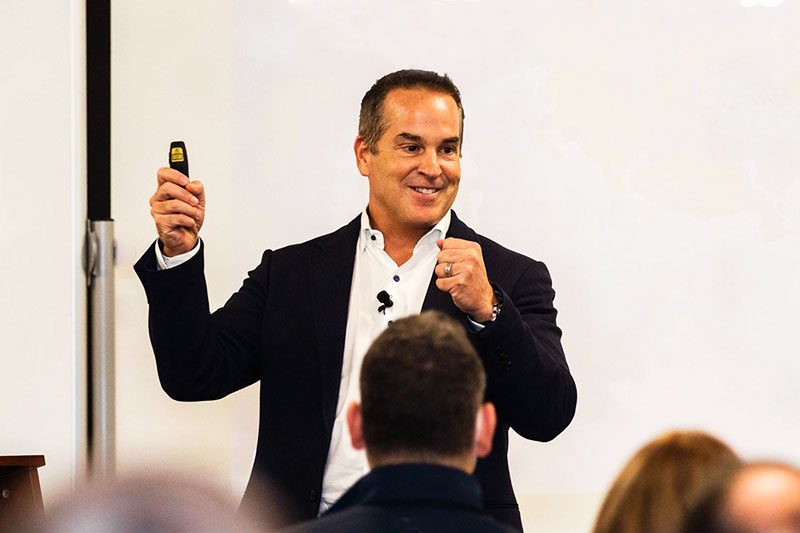What if teachers, in their quest to always be “nice,” never corrected a student when they got something wrong and always gave everyone A’s, so that no one’s feelings would be hurt, and no tough conversations would need to be had? I think we can all agree that it would be incredibly unfair and unkind to both the students truly deserving of A’s and to those who are being told their incorrect work is great.
The consequences of such dramatic niceness? The A’s would ring hollow for the deserving students when they realized that incorrect or incomplete work garnered the same grade, catapulting their motivation out the window. The kids who received undeserved A’s and believed their work to be correct would be left uneducated and ill-equipped to deal with hard work, criticism, or challenges required to become healthy, independent adults. And how healthy do you think the relationship between the two groups of students would be? Not very.
No system would be intentionally set up in this way, but if we aren’t paying attention, a system like our workplace culture can slide into this overly “nice” mindset. In her article Clear Is Kind. Unclear Is Unkind, Brene Brown shares senior leaders’ answers to this question:
“What, if anything, about the way people are leading today needs to change in order for leaders to be successful in a complex, rapidly changing environment where we’re faced with seemingly intractable challenges and an insatiable demand for innovation?”
A consistent answer among all respondents was, “We need braver leaders and more courageous cultures.” Brown and her team then followed up that answer with two more questions,
“Why courage?” and “What’s getting in the way of building more daring cultures?”
The primary issue the respondents identified as their greatest concern was: Avoiding tough conversations, including giving honest, productive feedback. Over half of the leaders indicated that a cultural norm of “nice and polite” was a primary obstacle.
So, being nice is bad?
No, being nice is good, as long as you understand what “nice” is and its role in leadership. Nice is being friendly and polite—it’s saying, “Good Morning,” with a smile, it’s holding a door open, or helping someone carry their bag. It’s surface pleasantries, that’s it. Nice is not pretending that everything everyone does is amazing just to keep everyone happy and smiling. Nice is not eliminating another person’s opportunity to learn and improve, simply to save you from having what you believe will be a difficult conversation.
As a leader, you can and should be polite and respectful (nice) even during tough conversations. But you must also be honest and make clear the reason for the conversation and its expected outcome. A leader cannot expect those they are leading to correct or improve behavior without the clarity, direction, support, and resources to make that change. To act with kindness is to assist another with their needs, and that’s exactly what a true leader does. Like a teacher, a leader’s job is to ensure that every employee has the opportunity to develop into the best individual and team contributor they can be. A competent and aligned team will elevate your company’s success. An incompetent or misaligned one will derail it quickly.
So, how can you stop “being nice” from becoming synonymous with “just keep smiling and nodding”? Here are three ways to get you started.
- Define your culture: If you want employees to freely share ideas and feel supported when they are sharing them, that value must be reflected throughout your culture. If you want employees to be motivated to continually expand their knowledge base, that value must be reflected throughout your culture. If you want people to be respectfully and constructively honest, that value must be reflected throughout your culture. If you don’t define your culture, it will define itself.
- Provide clear and frequent communication. The requirements and expectations of every individual’s and every team’s role in getting the job done must be clearly and frequently communicated to and understood by all involved. That clarity enables everyone to address issues in real time, eliminating the opportunity for those issues to escalate.
- Address misalignments as soon as they are identified. The first step in addressing misalignments is understanding why the misalignment occurred. If it’s because the employee wasn’t provided clear direction and expectations or the resources to fulfill them, that’s a different conversation than with an employee who has been equipped but chooses to underperform or create tension within the team. Once you have all the information, determine the desired outcome, and then clearly articulate the required outcome as soon as possible.
Even the most embedded cultures can veer off course if the leader is not paying attention. To keep the culture on track, it’s important to occasionally step back and view what’s going on around you with an objective perspective. When was the last time you heard your teams engage in constructive debate or a lively brainstorming session? Are there team members who tend to hold back? Why is that? Are you consistently engaging in a way that reflects the company’s values and culture? Are you having the necessary tough conversations and supporting your leaders up and down the ladder to do the same?
The onus is on you, the leader, to develop and support the systems that will cultivate the braver leaders and courageous cultures necessary to successfully navigate our rapidly evolving, increasingly complex, and demanding world.














